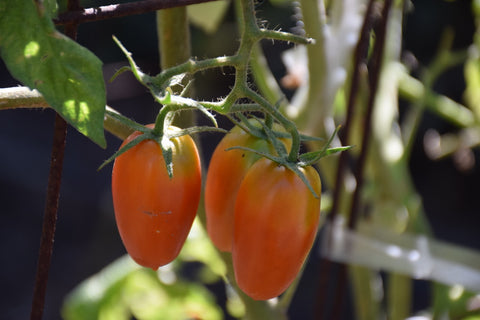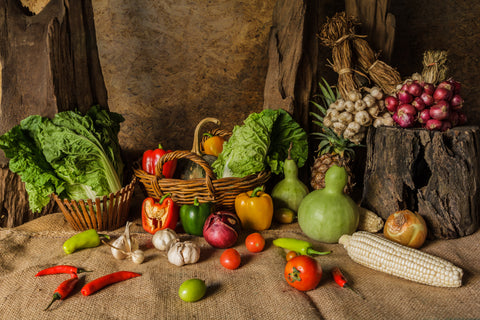10 Reasons To Start A Raised Bed Garden
Gardening on garden beds "up" rather than "down" simply means that the growth medium is above the ground. In the most basic case, ascending gardening can be achieved by stacking soil a few inches in an existing garden beds or before adding plants.
In order to obtain the benefits of garden beds, most roots of plants need to grow above the soil line.
Building a planting box with a retaining wall can make the soil "rise" year by year and keep it in place.
These semi permanent shells can be made of wood, metal, stone, bricks, concrete blocks, and many other materials you may have in your home. If you don't have time or energy to DIY, the garden beds kit is complete and only needs to be assembled.
Planting crops on garden beds is an elegant solution to many of the challenges that arise in gardens. Compared with the traditional underground garden plot, it absolutely has some obvious advantages.
There is a reason why raised garden beds are so durable and popular. Let's count the ways to improve the soil, which is better for planting food and gardeners.

1.Superior soil quality
The garden depends on its soil.
Loam is an ideal soil type for growing fruits, vegetables, herbs and flowers. Black, fertile, fragile loam consists of roughly equal amounts of sand and silt and a small amount of clay.
Most plants like fertile soil, because it can retain nutrients and water more than sand, and has better drainage and airflow than clay or silt.
When your existing garden soil is mainly composed of clay or sand or silt, you need to use soil conditioner and improver to repair it. Working in large amounts of organic matter (such as compost) helps to correct poor soil quality and turn poor soil into fertile soil.
However, garden beds can completely control the quality and characteristics of the growth medium - allowing you to completely skip the efforts to improve the native soil.
Usually, garden boxes are filled with a mixture of good topsoil and compost. The mixture may include optional additives such as perlite, coconut shell, sphagnum or leaf mold. Starting with fertile soil will ensure that your plants are healthy and productive from the start.
Raised garden beds are also a good solution when fighting against rocks, too acidic or too alkaline soils, or soils that have been infested by soil borne pests.
Urban gardeners living in cities with industrial history can use garden beds to avoid possible contamination of their crops by heavy metals and lead.
Even a nearby black walnut tree can cause serious damage to tomatoes, peppers, berries and other plants sensitive to fenugreek. Growing on garden beds can protect these crops from toxins produced by trees' deep roots.
After the first year, improve soil fertility and maintain soil health through crop rotation every season, planting green manure and planting nitrogen fixing agent in autumn.
2.No farming
The traditional garden needs to turn over the garden bed every year to break up the lumps and loosen the compacted soil. During farming, soil amendments and fertilizers are added and mixed into the existing garden soil.
Despite good intentions, planting gardens does more harm than good in building healthy soil.
By not digging your garden, you can maintain the integrity of the natural soil structure and all beneficial microorganisms in it.
Gardening on an garden beds is almost something you can get without digging.
After initially filling the growth box with topsoil and compost, soil conditioner can be added to the top few inches of soil in subsequent years.
There is no need to confuse. Plant roots, earthworms and other soil life will inflate and transport nutrients through the bed.
3.Minimize soil compaction
Plants grow best in light, loose and fluffy soil.
Any mistake in the garden will compress the soil and eliminate the air pores between soil particles.
Compacted soil is denser and cannot contain water, air, nutrients or biological life. Affected plants will begin to wither, show nutritional deficiencies, or become very slow to grow.
Garden stepping stones and covered paths are very important for underground gardens to prevent the soil from being trampled and compacted in the whole place. However, these sidewalks cannot resist wandering children, wandering pets or unsound gardeners.

The raised garden beds is hardly affected by soil compaction. As the garden is higher than the normal ground, the soil and plants are more protected from accidental walking and clumsy mistakes.
4.Better drainage and easier irrigation
Raising the soil one foot or more above the ground greatly improves soil drainage.
Like soil compaction, water saturated soil prevents air from flowing into the tiny spaces between particles. The lack of a stable air supply to the soil can make plants feel stressed and hinder their growth.
In areas prone to heavy rain and floods, when you often struggle with flooded soil, garden beds gardening may be the only way to grow crops.
Keep in mind that because raised beds have better drainage, they usually dry faster than underground gardens.
In other words, it is easier and less wasteful to keep garden beds watered than to irrigate gardens underground.
Instead of using sprinklers to saturate large areas, drip irrigation systems are more efficient and can be set on each bed. This helps to save water, as irrigation is specific to each plant and is kept within the garden beds frame.
To repair soils that drain too freely, add plenty of compost and organic matter to increase moisture retention.
5.Reduce weeds
Weed seeds are opportunistic creatures that can sleep in the soil for many years.
It is spread by the mature weeds in the past, and almost every square inch of garden soil contains the potential of weed life.
They appear whenever the soil is disturbed. Cultivating and digging garden beds bring weed seeds closer to the ground, allowing them to come into contact with the sun.
Weeds on raised garden beds are not a problem because the soil rarely (if any) becomes compacted. No soil compaction means no tillage is required to keep the soil surface intact and weed seeds inert.
When you need to dig in the soil to sow or plant seedlings, try to minimize soil disturbance. For example, only dig as deep and wide as the root ball of the seedling.
Apply a thick layer of garden covering around the planting site to bury any newly exposed weed seeds and block the sun.
6.Extend the growing season
The garden beds can work earlier than the bed on the ground in spring.
This is mainly because they improve the drainage system. And because they have better drainage and faster soil temperature rise, gardeners with cool climate have a good start in the growing season.
In autumn, garden beds can also provide better frost protection. Hot air rises and cold air sinks, so plants growing in upland soils benefit from temperatures slightly above the ground.
Warm bumps may also mean that you can winterize perennial crops that are slightly beyond your hardy areas. These experiments are covered to provide additional cold insulation.
7.More productive crops
The raised garden beds creates an almost perfect environment for growing food.
Healthy soil, good drainage and less soil compaction are successful combinations to keep plants happy. Because of the long growing season, garden crops planted on garden beds usually have high yields.
A 4 foot wide, 10 foot long garden beds can provide 60 pounds of vegetables and fruits during the four to six month growing season. Building five beds of this size will produce 300 pounds of agricultural produce, which is the average amount of food a person eats every year.
Different from the spacing and number of rows required for underground gardens, raised beds can make crops grow more closely.
Intensive planting techniques - such as intercropping, square foot gardening, vertical gardening, and continuous planting - can evoke truly epic harvests on garden beds.
Because it makes more effective use of the planting area, the garden bed is very suitable for gardening in a narrow or limited space.
8.Low physical strength requirements
Ground gardening requires a lot of hard work.
Every spring, gardeners must cultivate the land, mix soil amendments, pull up weeds, and then plant and sow. Back and knee soreness should not be an annual bar mitzvah!
But with garden beds, gardeners can avoid seasonal pain. In general, less maintenance is required. The garden beds garden actually eliminates the need for farming, mixing and weeding.
The wall of the garden bed can be customized to any comfortable height. Make it at least 12 inches high to avoid bending and kneeling heavily. You can even build a ledge around the bed so you can sit down while taking care of it.
Accessibility can also be considered in the construction of garden beds. Elevated and keyhole beds allow gardeners to stay seated while working.
This ensures that those who are physically restricted can enjoy gardening.
9.Increase visual attractiveness
The carefully designed garden beds layout can make the backyard garden look absolutely amazing.
Raised garden beds can be constructed to any size and shape. Square, rectangular, L-shaped and U-shaped, circular, triangular, keyhole and multi-layer are examples of some forms that garden beds can take.
They can be easily customized for large and small gardens. Look at these garden layout concepts to inspire your design.

Don't forget that the vegetable garden can also become a beautiful space. Rather than row by row, it is better to create a more attractive and revitalizing place with winding paths, rest areas and arbors covered with vines. Use the principles of plantations to create an amazing focus next to your lush crops.
The annual rotation of plants means that garden space will never become stale. Keep fresh by redesigning the appearance of each new season.
10.Perfect for beginners
As you can see, gardening on garden beds eliminates many of the barriers to success that traditional gardens often come with.
There is no need to test and modify the original garden soil, excavate and cultivate the land, fight against weeds endlessly or solve problems such as poor drainage. The raised garden bed is a wonderful introduction to the horticultural world.
The road to victory is also very simple: build a planting box, fill it with soil, add compost, plant seeds, and keep watering. Following these simple steps can actually ensure that your crop can grow
